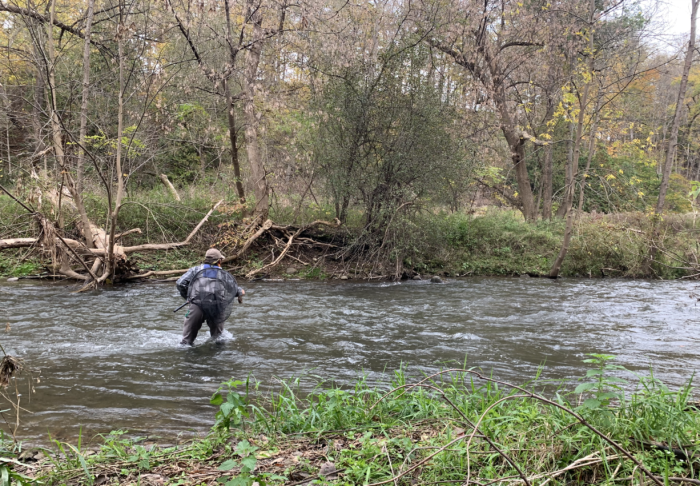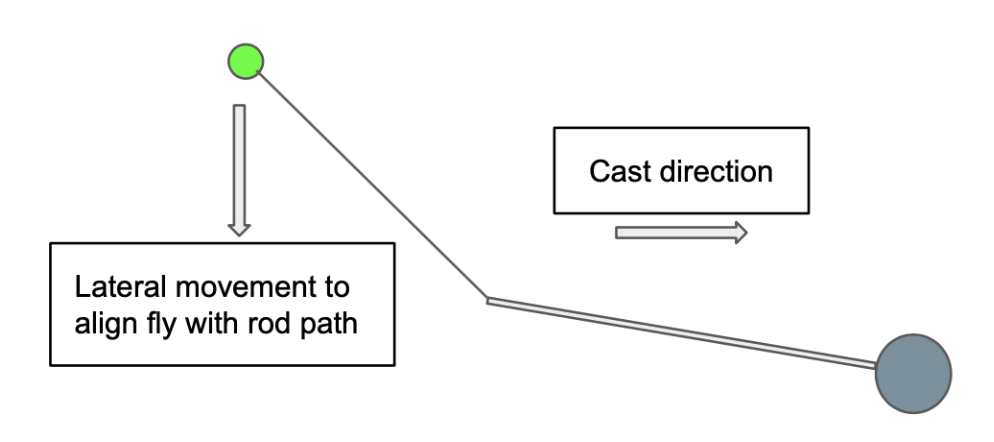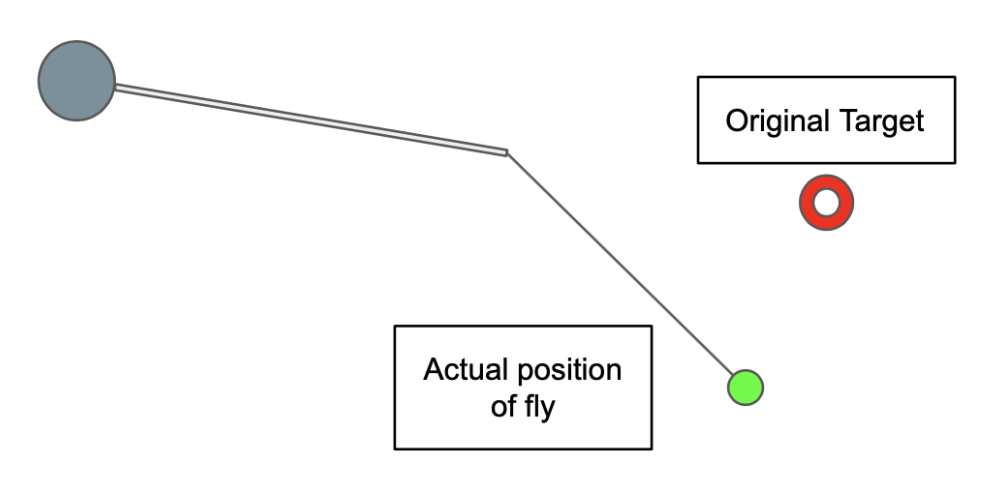
How to Improve Casting Accuracy with a Euro Rig
You know when you’re on the water trying to place a cast right up the edge of a seam, and the fly keeps kicking to one side? No matter what you do the fly keeps missing the target, by a few inches or even feet. There are a lot of things that can throw your casting accuracy off, however when working with people new to the nymphing game I find one of the most common reasons is that the cast is being set up improperly. When throwing a euro rig, the position of the flies on the back cast has a big impact on where they end up on the forward cast.
This relationship between position on the back cast and where the fly lands is what I call the 180° rule. Basically, your flies are always going to end up 180° from where they started on the back cast. If you don’t believe me, you can test it out yourself. The next time you’re making a cast, imagine a straight line from where the fly is sitting on the back cast through the rod tip. If you try and place the fly off to the side of this line, it will be pretty difficult. The reason this happens is one of the most well know laws of physics– a body in motion wants to stay in motion.
When casting a nymphing rig, the majority of the weight is in the flies. This large mass on the end of the line takes some work to get moving, and wants to keep moving in whatever direction it was thrown. If the rod tip does not travel in a straight line with the fly, the fly has to move laterally into the rod’s path of travel before it can move forward towards the target. This lateral velocity does not go away when the fly starts moving forward, so as the cast unfurls the fly will continue moving in whatever sideways direction it started in, causing it to miss the target. The combined direction of the forward and lateral motion works out to be roughly 180° in most cases. I’m no graphic designer, but I gave my best shot at illustrating it below.
How a poor set up affects the cast
 1.) In the initial part of the cast the fly is mainly moving to the side to line up with the path of the rod. The amount of lateral movement depends on how far off to the side the fly is. The further the fly is from the path of travel at the beginning, the further it will end up from the target.
1.) In the initial part of the cast the fly is mainly moving to the side to line up with the path of the rod. The amount of lateral movement depends on how far off to the side the fly is. The further the fly is from the path of travel at the beginning, the further it will end up from the target.
 2.) Once the fly reaches the path of travel it begins moving forward. However, the lateral velocity is conserved, so it continues moving in this direction as the cast unfurls.
2.) Once the fly reaches the path of travel it begins moving forward. However, the lateral velocity is conserved, so it continues moving in this direction as the cast unfurls. 
3.) At the end of the cast, the continued lateral motion will move the fly away from the target. It will roughly be as far from the target as it was from the path of travel in the beginning of the cast, but in the opposite direction.
Since every caster has a different style and no cast is perfect, the mechanisms behind the flies’ movement may be different in different cases. I would also say this is probably an over simplified depiction. However, I find this way of thinking about it is usually a pretty good model and I have had a lot of success describing it this way with clients on the water.
How to use this to improve casting accuracy
So, how can knowing this improve casting accuracy? Once you know why the fly has to be in line with the path of travel, setting up the cast becomes more intuitive. For water loaded casts, make sure the fly is placed behind you at about this 180° from the target. When casting overhead, make sure the fly travels in a straight path before making the final presentation. Especially when changing position, this can entail slowly changing the direction of the fly with false casts until it is traveling straight back and forth towards the target. When “lobbing” the fly, make sure it starts out by hanging straight down from the rod tip.
Whatever method you’re using to cast, pay close attention to how the fly’s position on the back cast affects its position in the final presentation. Once it becomes clear how the starting position affects your cast’s accuracy, it will make more sense how to set it up and get the result you want. Like everything, it takes time on the water to really see how it all works, but keeping this in mind can really help step up your casting game. If it’s taking you a bit to get the hang of things, you can always use some of the tips from my previous article Wade Before you Cast to set yourself up for quicker success.
As always, tight lines and good luck on the water!
Mike Komara
